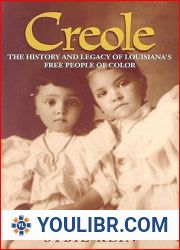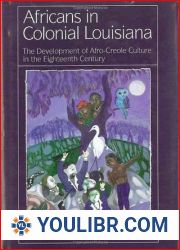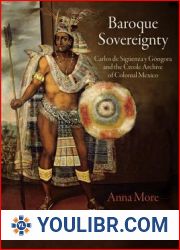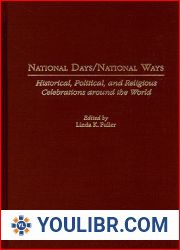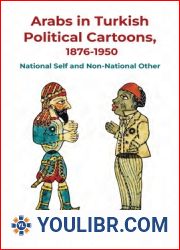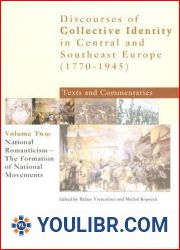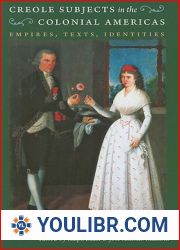
BOOKS - A Creole Nation: National Integration in Guinea-Bissau

A Creole Nation: National Integration in Guinea-Bissau
Author: Christoph Kohl
Year: April 1, 2018
Format: PDF
File size: PDF 1.5 MB
Language: English

Year: April 1, 2018
Format: PDF
File size: PDF 1.5 MB
Language: English

Despite the country's high degree of cultural and ethnic diversity, as well as its prevailing political instability, the population of Guinea-Bissau has developed a strong sense of national belonging. In "A Creole Nation: National Integration in Guinea-Bissau Christoph Kohl explores how creole identity, culture, and political leaders have influenced postcolonial nation-building processes in the country, and how the phenomenon of cultural creolization has led to the emergence of new identities and challenges to traditional power structures. The book begins by examining the historical context of Guinea-Bissau, including its colonial past and the impact of slavery and the transatlantic slave trade on the region. The author then delves into the concept of creolization, discussing how this process has shaped the country's language, religion, music, and other aspects of its cultural heritage. Through a series of case studies, the author illustrates how creole identity has been used to unify the country's diverse populations, particularly during times of political turmoil. For example, during the country's struggle for independence from Portugal in the 1960s and 1970s, creole culture was embraced as a symbol of national unity and resistance against colonial rule. Similarly, during the civil war that ravaged the country in the 1990s, creole identity was used to bridge ethnic and regional divisions and promote peace and reconciliation.
Несмотря на высокую степень культурного и этнического разнообразия страны, а также ее преобладающую политическую нестабильность, у населения Гвинеи-Бисау сформировалось сильное чувство национальной принадлежности. В книге «Креольская нация: национальная интеграция в Гвинее-Бисау» Кристоф Коль исследует, как креольская идентичность, культура и политические лидеры повлияли на постколониальные процессы национального строительства в стране, и как феномен культурной креолизации привел к появлению новых идентичностей и проблем для традиционных властных структур. Книга начинается с изучения исторического контекста Гвинеи-Бисау, включая её колониальное прошлое и влияние рабства и трансатлантической работорговли на регион. Затем автор углубляется в концепцию креолизации, обсуждая, как этот процесс сформировал язык страны, религию, музыку и другие аспекты ее культурного наследия. С помощью серии тематических исследований автор иллюстрирует, как креольская идентичность использовалась для объединения различных групп населения страны, особенно во времена политических потрясений. Например, во время борьбы страны за независимость от Португалии в 1960-х и 1970-х годах креольская культура была воспринята как символ национального единства и сопротивления колониальному правлению. Аналогичным образом, во время гражданской войны, которая опустошила страну в 1990-х годах, креольская идентичность использовалась для преодоления этнических и региональных разногласий и содействия миру и примирению.
Malgré la grande diversité culturelle et ethnique du pays, ainsi que son instabilité politique prédominante, la population de Guinée-Bissau a développé un fort sentiment d'appartenance nationale. Dans le livre La nation créole : l'intégration nationale en Guinée-Bissau, Christophe Kohl étudie comment l'identité créole, la culture et les dirigeants politiques ont influencé les processus post-coloniaux de construction nationale dans le pays, et comment le phénomène de la créolisation culturelle a donné naissance à de nouvelles identités et à de nouveaux problèmes pour les structures de pouvoir traditionnelles. livre commence par une étude du contexte historique de la Guinée-Bissau, y compris son passé colonial et l'impact de l'esclavage et de la traite transatlantique des esclaves sur la région. L'auteur approfondit ensuite le concept de créolisation en discutant de la façon dont ce processus a façonné la langue du pays, la religion, la musique et d'autres aspects de son patrimoine culturel. Au moyen d'une série d'études de cas, l'auteur illustre comment l'identité créole a été utilisée pour rassembler les différentes populations du pays, en particulier en période de bouleversement politique. Par exemple, lors de la lutte du pays pour l'indépendance du Portugal dans les années 1960 et 1970, la culture créole a été perçue comme un symbole de l'unité nationale et de la résistance au régime colonial. De même, pendant la guerre civile qui a dévasté le pays dans les années 1990, l'identité créole a été utilisée pour surmonter les divisions ethniques et régionales et promouvoir la paix et la réconciliation.
A pesar de la gran diversidad cultural y étnica del país, así como de su inestabilidad política imperante, la población de Guinea-Bissau ha adquirido un fuerte sentido de pertenencia nacional. En el libro «La nación criolla: integración nacional en Guinea-Bissau», Christophe Kohl explora cómo la identidad criolla, la cultura y los líderes políticos han influido en los procesos postcoloniales de construcción nacional en el país, y cómo el fenómeno de la criolarización cultural ha dado lugar a nuevas identidades y desafíos para las estructuras de poder tradicionales. libro comienza con un estudio del contexto histórico de Guinea-Bissau, incluyendo su pasado colonial y la influencia de la esclavitud y la trata transatlántica de esclavos en la región. A continuación, el autor profundiza en el concepto de criolarización, discutiendo cómo este proceso ha formado la lengua del país, la religión, la música y otros aspectos de su patrimonio cultural. A través de una serie de estudios de casos, el autor ilustra cómo se utilizó la identidad criolla para unir a las diferentes poblaciones del país, especialmente en tiempos de agitación política. Por ejemplo, durante la lucha del país por la independencia de Portugal en las décadas de 1960 y 1970, la cultura criolla fue percibida como un símbolo de unidad nacional y resistencia al gobierno colonial. Asimismo, durante la guerra civil que asoló el país en la década de 1990, se utilizó la identidad criolla para superar las divisiones étnicas y regionales y promover la paz y la reconciliación.
Nonostante l'elevato grado di diversità culturale ed etnica del Paese e la sua prevalente instabilità politica, la popolazione della Guinea-Brindisi ha sviluppato un forte senso di appartenenza nazionale. In «La nazione creola: l'integrazione nazionale in Guinea-Bangladesh», Christophe Kohl ha studiato come l'identità creola, la cultura e i leader politici abbiano influenzato i processi post-coloniali di costruzione nazionale nel paese, e come il fenomeno della creolizzazione culturale abbia portato a nuove identità e sfide per le strutture tradizionali di potere. Il libro inizia con uno studio del contesto storico della Guinea-Bangladesh, compreso il suo passato coloniale e l'impatto della schiavitù e del commercio transatlantico di schiavi sulla regione. Poi l'autore approfondisce il concetto di creolizzazione, discutendo come questo processo ha formato la lingua del paese, la religione, la musica e altri aspetti del suo patrimonio culturale. Attraverso una serie di studi di caso, l'autore illustra come l'identità creola sia stata utilizzata per unire le diverse popolazioni del paese, soprattutto in tempi di turbolenze politiche. Ad esempio, durante la lotta per l'indipendenza dal Portogallo negli anni Sessanta e Settanta, la cultura creola fu considerata un simbolo di unità nazionale e resistenza al governo coloniale. Allo stesso modo, durante la guerra civile che ha devastato il paese negli annì 90, l'identità creola è stata usata per superare le divergenze etniche e regionali e promuovere la pace e la riconciliazione.
Trotz der großen kulturellen und ethnischen Vielfalt des Landes sowie seiner vorherrschenden politischen Instabilität hat die Bevölkerung Guinea-Bissaus ein starkes Gefühl der nationalen Zugehörigkeit entwickelt. In „Die kreolische Nation: Nationale Integration in Guinea-Bissau“ untersucht Christoph Kohl, wie kreolische Identitäten, Kultur und politische Führer die postkolonialen Prozesse des Nationalbaus im Land beeinflussten und wie das Phänomen der kulturellen Kreolisierung zu neuen Identitäten und Problemen für traditionelle Machtstrukturen führte. Das Buch beginnt mit einer Untersuchung des historischen Kontextes Guinea-Bissaus, einschließlich seiner kolonialen Vergangenheit und der Auswirkungen der Sklaverei und des transatlantischen Sklavenhandels auf die Region. Der Autor taucht dann in das Konzept der Kreolisierung ein und diskutiert, wie dieser Prozess die Sprache des Landes, die Religion, die Musik und andere Aspekte seines kulturellen Erbes geprägt hat. Mit einer Reihe von Fallstudien veranschaulicht der Autor, wie die kreolische Identität genutzt wurde, um die verschiedenen Bevölkerungsgruppen eines Landes zusammenzubringen, insbesondere in Zeiten politischer Umbrüche. Während des Kampfes des Landes um die Unabhängigkeit von Portugal in den 1960er und 1970er Jahren wurde die kreolische Kultur beispielsweise als Symbol der nationalen Einheit und des Widerstands gegen die Kolonialherrschaft wahrgenommen. Ebenso wurde während des Bürgerkriegs, der das Land in den 1990er Jahren verwüstete, die kreolische Identität genutzt, um ethnische und regionale Spaltungen zu überwinden und Frieden und Versöhnung zu fördern.
למרות המגוון התרבותי והאתני הגבוה במדינה, כמו גם חוסר היציבות הפוליטית השכיחה בה, פיתחו תושבי גינאה-ביסאו תחושה חזקה של זהות לאומית. ב- ”The Creole Nation: National Integration in Guinea-Bissau”, כריסטוף קול חוקר כיצד זהות קריאולית, תרבות ומנהיגים פוליטיים השפיעו על תהליכי בניית האומה הפוסט-קולוניאלית של המדינה, וכיצד תופעת הקריאוליזציה התרבותית הובילה לזהויות ולאתגרים חדשים עבור מבני כוח מסורתיים. הספר מתחיל בבדיקת ההקשר ההיסטורי של גינאה-ביסאו, כולל העבר הקולוניאלי שלה והשפעת העבדות וסחר העבדים הטרנס-אטלנטי על האזור. המחבר מתעמק במושג הקריאוליזציה, ומדבר על האופן שבו התהליך עיצב את השפה, הדת, המוזיקה והיבטים אחרים של המורשת התרבותית של המדינה. באמצעות סדרת מחקרים, המחבר ממחיש כיצד נוצלה זהות קריאולית כדי לאחד אוכלוסיות שונות של מדינה, במיוחד בתקופות של תהפוכות פוליטיות. לדוגמה, במהלך מאבקה של המדינה לעצמאות מפורטוגל בשנות ה-60 וה-70, התרבות הקריאולית נתפסה כסמל לאחדות לאומית והתנגדות לשלטון הקולוניאלי. באופן דומה, במהלך מלחמת האזרחים שהחריבה את המדינה בשנות ה-90, הזהות הקריאולית שימשה כדי לגשר על מחלוקות אתניות ואזוריות ולקדם שלום ופיוס.''
Ülkenin yüksek derecede kültürel ve etnik çeşitliliğine ve mevcut siyasi istikrarsızlığına rağmen, Gine-Bissau halkı güçlü bir ulusal kimlik duygusu geliştirdi. "The Creole Nation: National Integration in Gine-Bissau" (Creole Ulusu: Gine-Bissau'da Ulusal Bütünleşme) adlı kitabında Christophe Kohl, Creole kimliğinin, kültürünün ve siyasi liderlerinin ülkenin sömürge sonrası ulus inşa süreçlerini nasıl etkilediğini ve kültürel creolization olgusunun geleneksel güç yapıları için yeni kimlikler ve zorluklara nasıl yol açtığını araştırıyor. Kitap, sömürge geçmişi ve köleliğin ve transatlantik köle ticaretinin bölge üzerindeki etkisi de dahil olmak üzere Gine-Bissau'nun tarihsel bağlamını inceleyerek başlıyor. Yazar daha sonra, sürecin ülkenin dilini, dinini, müziğini ve kültürel mirasının diğer yönlerini nasıl şekillendirdiğini tartışarak kreolizasyon kavramına giriyor. Bir dizi vaka çalışması aracılığıyla, yazar, Creole kimliğinin, özellikle siyasi karışıklık zamanlarında, bir ülkenin farklı nüfuslarını bir araya getirmek için nasıl kullanıldığını göstermektedir. Örneğin, ülkenin 1960'larda ve 1970'lerde Portekiz'den bağımsızlık mücadelesi sırasında, Creole kültürü ulusal birliğin ve sömürge yönetimine karşı direnişin bir sembolü olarak algılandı. Benzer şekilde, 1990'larda ülkeyi harap eden iç savaş sırasında, Creole kimliği etnik ve bölgesel bölünmeleri köprülemek ve barış ve uzlaşmayı teşvik etmek için kullanıldı.
على الرغم من ارتفاع درجة التنوع الثقافي والعرقي في البلد، فضلا عن عدم استقراره السياسي السائد، فقد اكتسب شعب غينيا - بيساو إحساسا قويا بالهوية الوطنية. في «The Creole Nation: National Integration in Guinea-Bissau»، يستكشف كريستوف كول كيف أثرت هوية الكريول وثقافتهم وزعماؤهم السياسيون على عمليات بناء الدولة بعد الاستعمار في البلاد، وكيف أدت ظاهرة الكريولية الثقافية إلى هويات وتحديات جديدة هياكل السلطة التقليدية. ويبدأ الكتاب بدراسة السياق التاريخي لغينيا - بيساو، بما في ذلك ماضيها الاستعماري وأثر الرق وتجارة الرقيق عبر المحيط الأطلسي على المنطقة. ثم يتعمق المؤلف في مفهوم الكريولية، ويناقش كيف شكلت العملية لغة البلاد ودينها وموسيقاها وجوانب أخرى من تراثها الثقافي. من خلال سلسلة من دراسات الحالة، يوضح المؤلف كيف تم استخدام هوية الكريول للجمع بين مختلف السكان في بلد ما، خاصة في أوقات الاضطرابات السياسية. على سبيل المثال، خلال كفاح البلاد من أجل الاستقلال عن البرتغال في الستينيات والسبعينيات من القرن الماضي، كان يُنظر إلى ثقافة الكريول على أنها رمز للوحدة الوطنية ومقاومة الحكم الاستعماري. وبالمثل، خلال الحرب الأهلية التي دمرت البلاد في التسعينيات، تم استخدام هوية الكريول لسد الانقسامات العرقية والإقليمية وتعزيز السلام والمصالحة.
기니 비사우 사람들은 국가의 높은 수준의 문화적, 인종적 다양성과 정치적 불안정에도 불구하고 국가 정체성에 대한 강한 감각을 발전 시켰습니다. 크리스토프 콜 (Christophe Kohl) 은 "크리올 국가: 기니 비사우의 국가 통합" 에서 크리올 정체성, 문화 및 정치 지도자들이 식민지 이후의 국가 건설 과정에 어떤 영향을 미쳤는지, 그리고 문화적 창조 현상이 어떻게 전통적인 정체성과 도전 구조. 이 책은 식민지 시대와 노예 제도와 대서양 횡단 노예 무역이이 지역에 미치는 영향을 포함하여 기니 비사우의 역사적 맥락을 조사하는 것으로 시작됩니다. 그런 다음 저자는 그 과정이 어떻게 국가의 언어, 종교, 음악 및 문화 유산의 다른 측면을 형성했는지에 대해 논의하면서 창조의 개념을 탐구합니다. 저자는 일련의 사례 연구를 통해 특히 정치적 격변의시기에 국가의 다른 인구를 하나로 모으기 위해 Creole 정체성이 어떻게 사용되었는지 보여줍니다. 예를 들어, 1960 년대와 1970 년대 포르투갈과의 독립을위한 투쟁 중에 크리올 문화는 식민지 통치에 대한 국가적 통일과 저항의 상징으로 인식되었습니다. 마찬가지로 1990 년대에이 나라를 황폐화시킨 내전 동안 크리올 정체성은 민족과 지역의 분열을 해소하고 평화와 화해를 촉진하는 데 사용되었습니다.
国の文化や民族の多様性、政治的な不安定性の高さにもかかわらず、ギニアビサウの人々は、国民のアイデンティティの強い感覚を開発しました。クリストフ・コールは「The Creole Nation: National Integration in Guinea-Bissau」において、クレオールのアイデンティティ、文化、政治指導者が国のポストコロニアル国家構築プロセスにどのような影響を与えたか、そして文化的クレオール化の現象が伝統的な権力構造の新しいアイデンティティと課題にどのようにつながったのかを探求している。この本は、植民地時代の過去や奴隷制の影響、大西洋横断の奴隷貿易がこの地域に及ぼす影響など、ギニアビサウの歴史的文脈を調べることから始まる。そして、その過程がどのようにして国の言語、宗教、音楽、その他の文化遺産を形作ったのかを論じ、クレオリゼーションの概念を掘り下げます。一連のケーススタディを通して、著者は、クレオールのアイデンティティが、特に政治的動乱の時代に、国のさまざまな集団を結びつけるためにどのように使用されてきたかを説明します。例えば、1960代から1970代にかけてのポルトガルからの独立闘争において、クレオール文化は国家の統一と植民地支配への抵抗の象徴として認識された。同様に、1990代にこの国を荒廃させた内戦の間、クレオールのアイデンティティは民族と地域の分断を橋渡しし、平和と和解を促進するために使われた。
盡管幾內亞比紹的文化和族裔多樣性很高,而且政治局勢普遍不穩定,但幾內亞比紹人民的民族歸屬感很強。克裏斯托夫·科爾(Christoph Kohl)在《克裏奧爾民族:幾內亞比紹的民族融合》一書中探討了克裏奧爾人的身份,文化和政治領導人如何影響該國的後殖民國家建設進程,以及文化克裏奧爾化現象如何為傳統權力結構帶來了新的身份和挑戰。該書首先探討了幾內亞比紹的歷史背景,包括其殖民歷史以及奴隸制和跨大西洋奴隸貿易對該地區的影響。然後,作者深入探討了克裏奧爾語的概念,討論了這一過程如何塑造了國家的語言,宗教,音樂及其文化遺產的其他方面。通過一系列案例研究,作者說明了克裏奧爾人的身份如何被用來統一該國不同的人口,尤其是在政治動蕩時期。例如,在1960代和1970代該國爭取脫離葡萄牙獨立的鬥爭中,克裏奧爾文化被視為民族團結和抵抗殖民統治的象征。同樣,在1990代摧毀該國的內戰期間,克裏奧爾人的身份被用來克服種族和地區的分歧,並促進和平與和解。







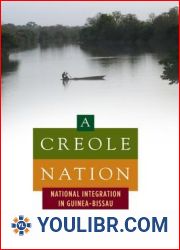
 49
49  3 TON
3 TON

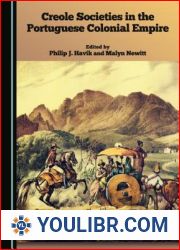

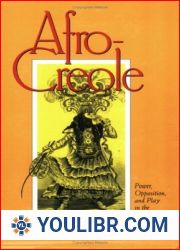
![Creole Economics (04) by Browne, Katherine E [Paperback (2004)] Creole Economics (04) by Browne, Katherine E [Paperback (2004)]](https://youlibr.com/img/6/685437_oc.jpg)




